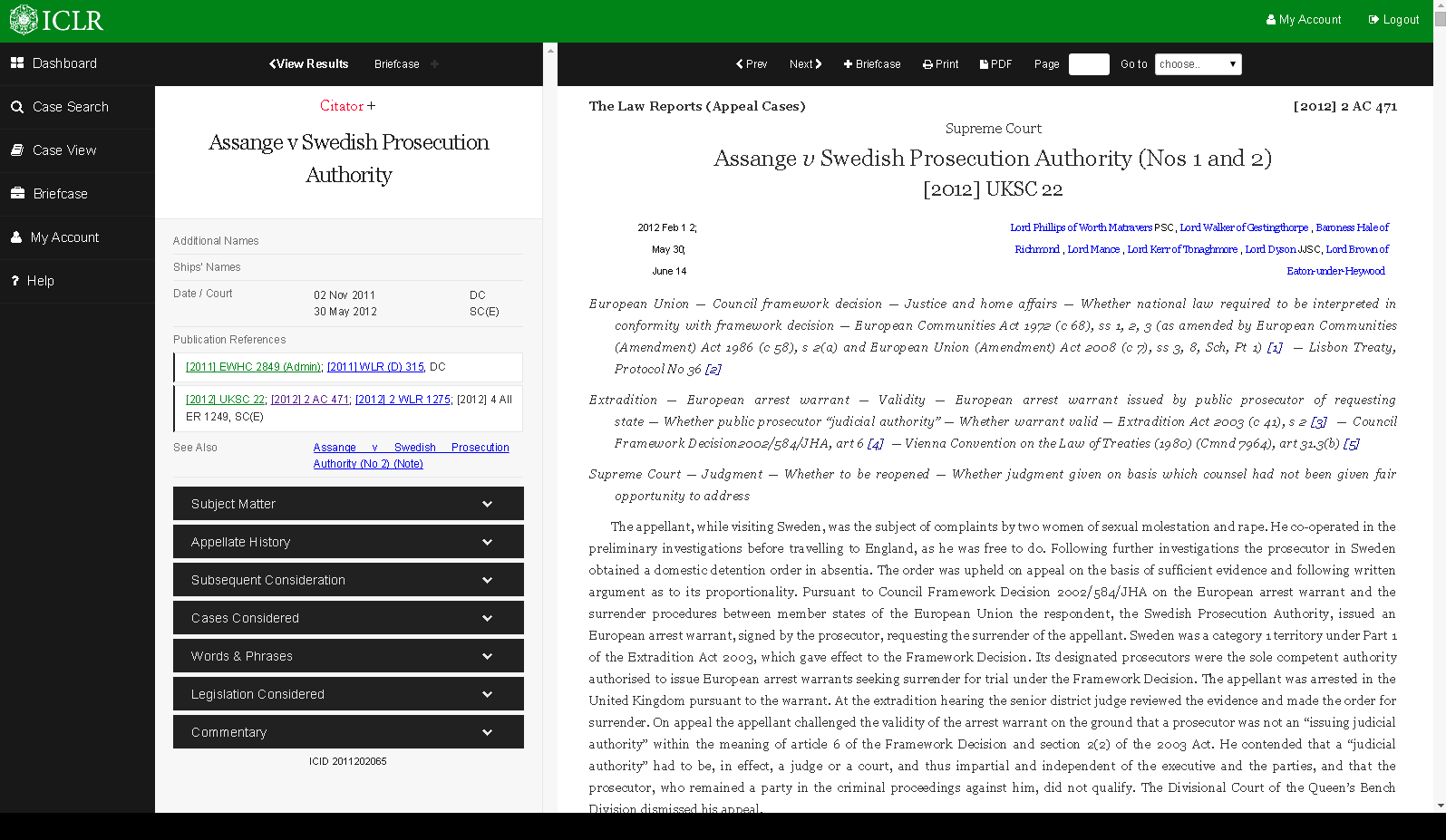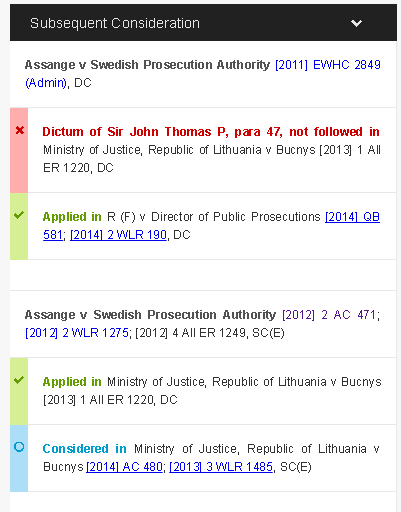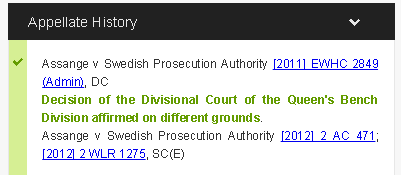Judicial consideration: a reporter’s guide to good law
Cases and their status as good law. In a Common Law jurisdiction, judges have the ability to change or clarify the law and to set precedents which bind the court in later cases. But as the law is continually developing, and as cases decided by one court can be affected by later decisions of a higher
Cases and their status as good law.
In a Common Law jurisdiction, judges have the ability to change or clarify the law and to set precedents which bind the court in later cases. But as the law is continually developing, and as cases decided by one court can be affected by later decisions of a higher court, it is essential for anyone researching case law to know to what extent, if at all, any particular case may have been affected by such “subsequent consideration”. That is why an essential feature of ICLR Online is to index all such relevant judicial considerations as part of its unique Citator+ service.
How to check for judicial consideration
When a law report is displayed in ICLR Online, the left part of the screen displays the Citator+ overview of that case, showing all relevant indexed information about the case. This includes the dates of judgments in all the hearings of courts which have considered the matter, any alternative party names under which it may have been listed, the neutral citations and the references for any law reports of the case (including all the main series, not just those published by ICLR).
There follow a number of tabs which can be opened to reveal, in turn, the Subject Matter of the hearings, any Appellate History, any Subsequent Consideration by later cases, any earlier Cases Considered, any legislative or contractual Words & Phrases construed by reference to their source provisions, any Legislation Considered, and any Commentary on the case (including ICLR’s new Case Comments series, derived from leading practitioners).


ICLR judicial treatment types
We have been indexing leading case law in our Consolidated Index (aka the “Red Book”) since the 1950s, and all that rich data has been incorporated into Citator+, and it is extended and updated constantly. All the indexing is done by qualified as barristers or solicitors, and checked by our experienced editorial team.
The different ways in which the judicial consideration of earlier cases in later cases have been recorded using the following labels, which for ease of use are colour coded on ICLR Online, offering a readily visible “traffic light” system of assessing the status of a case in law.
Followed
The court is expressing itself as bound by a previous decision of a court of coordinate or superior jurisdiction in a case where the material facts were the same or substantially the same.
Approved
The court approves a previous decision of a court of inferior jurisdiction, or dicta of a judge in a court of coordinate or inferior jurisdiction, in unrelated proceedings.
Applied
The court is applying the principle of or dicta in a previous decision to the case before it the facts of which are materially different from those of the earlier case.
Considered
The court considers a previous decision but does not actually follow, apply, distinguish it etc.
Explained
The court interprets a previous decision and states what it means.
Distinguished
The court decides that it need not follow a previous case by which it would otherwise be bound because there is some salient difference, e.g. of a fact or the
terms of a document, between the previous case and the one before it.
Doubted
The court is doubtful as to the correctness of a previous decision, without going so far as disagreeing with it.
Not applied
The court chooses not to apply a previous decision or dicta in a previous decision; this may be because the earlier decision is only of persuasive authority (e.g. Privy Council or another common law jurisdiction).
Not followed
The court has declined to follow a decision of a court of coordinate jurisdiction in a case where the facts were the same or substantially the same.
Disapproved
The court disagrees with a previous decision but either it is not necessary for the purpose of the case before it to overrule the previous decision or, both courts being of coordinate jurisdiction, there is no power to overrule the previous decision.
Overruled
The court decides that a previous decision of a court of inferior jurisdiction in unrelated proceedings is wrong.
Departed from
The Supreme Court has decided not to follow its own previous decision.

Appellate History
Where the same case is subsequently considered by a higher court, this treatment is captured under the category of Appellate History. There are three main types of treatment used, which again are colour coded for quick checking. As with other forms of consideration, the actual words used may vary, but the colour coding for the relevant type is retained.
Affirmed
The higher court agrees with the decision below and affirms its order.
Varied
The higher court may not have agreed with some aspect of the order made by the lower court and so has varied it.
Reversed
The higher court disagrees with the lower court’s view of the law and has reversed its decision or some aspect of it.
A word of warning.
Although ICLR’s indexing is comprehensive and thorough, there are certain things it cannot or does not routinely capture. It is possible for the effect of an important case, which creates or extends a rule at Common Law, to be overturned by Parliament in a subsequent statute. And the information which ICLR does capture is that which emerges from reported cases, so if a case is not the subject of a law report, or if it is not considered in a later case which is reported, its status will not have been assessed. That said, where any case which has been reported is affected by a later case, the later case will itself be reported and indexed, not least by virtue of its effect on an earlier reported case, because it will thereby have changed or clarified the existing law.
To be absolutely sure, it is always wise to check whether any case has been the subject of commentary in a standard textbook on the relevant area of law, in the academic legal press (journals etc) and, at a rather basic level, simply by doing a search on that case name on ICLR Online and other databases (such as BAILII) to see if it has been mentioned in a later case. (The fact that a case has merely been mentioned will not usually warrant an index entry on Citator+, but it may be of relevance to the research in hand.)
To try ICLR Online for free, or get a quote for a subscription, sign up here.